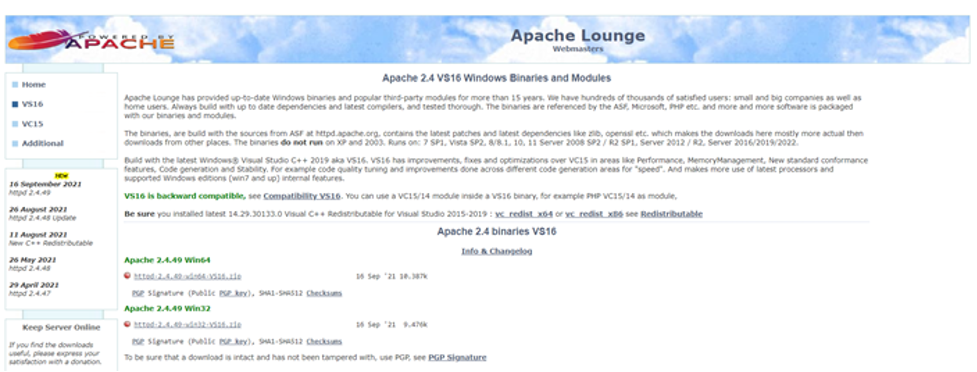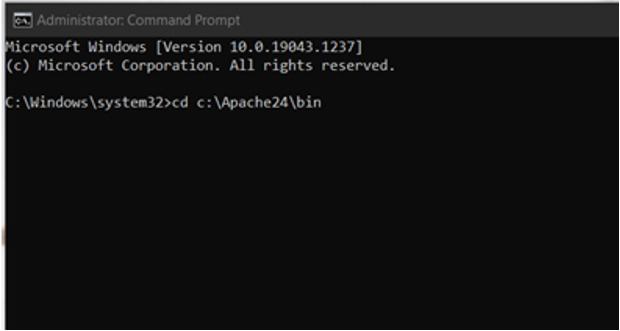
Do you ever think about what happens when you type something on the search bar and press Enter? Is it Hogwarts that sends your search results so fast?
Table of Contents
Time for some background information:
As soon as you press Enter, your operating system sends an HTTP request to the DNS server you are connected to, which conducts some searches, locates the target page, and sends you the information you want, and that takes less than a second. (So, it is not Hogwarts).
It is web servers that store all the data from around the globe and supply them to you whenever you need to access them.
Then what is an Apache Server?
An Apache Server or an Apache HTTP Server is a web server software that is open source and free to download and use. Also known as HTTPd web server, the apache server currently serves more than 35% of all web servers.
Developed by Robert McCool, it is a cross-platform software that provides web content. That means you can download Apache on Linux, Windows, or Unix. So when you press Enter in your browser, your computer sends the query to the Apache Web Server.
Apache web servers are easily customizable, fast, reliable, and highly secure. This makes it one of the most used web servers. It has an easy installation process, and management is simple.
Apache has been updated regularly since its launch.
The first Public HTTP server build of Apache was released back in April 1995. The recent major update of Apache Server was done before in December 2012 with version 2.4. It was meant to serve Cloud Technology primarily and optimize the performance of cloud platforms.
The latest Apache HTTPd build is version 2.4.49, released in September 2021, which addressed some security issues, introduced some new features, and fixed specific bugs.
How to download an Apache Server?
You can check the Apache Latest Versions and download them from here.
Apache is cross-platform, so you need to select a version and OS from the software catalog.
1. For using Apache on Windows, click on “Files for Microsoft Windows.”

2. Select a binary package of your choice and click on it (I’ll be using the Apache Lounge).

NOTE: You need to have the latest Visual C++ Redistributables installed on your computer before installing Apache Server.
3. Now, select the download file based on your Windows architecture (x86 or x32 for 32-bit systems, or x64 for 64-bit systems). You’ll also find the Visual C++ Redistributables there if you need to download them.
HINT: To check your Windows architecture, go to This-PC, right-click and click on Properties.

(If you scroll down here, you’ll see all the modules of Apache, which you can individually download and execute based on your requirements).
Your software is currently downloaded to your system. Now it’s time for installation. You can follow these steps:
1. Extract the downloaded files to c:/Apache24 (because that location is the ServerRoot in the config).
Make sure to read the ReadMe.txt
2. Now run Command Prompt as an administrator and change directory (cd) to the c:\Apache24\bin folder location.

3. Type “httpd.exe” to start Apache (or type “httpd.exe -k install” to install Apache as a Service). You may get a pop-up window at this step, asking you whether you want to allow Apache through the Windows Firewall, and you’ll need to enable it to use the service.

(If you installed Apache as a Service, then type “Services.msc” in cmd, press Enter, and you’ll find Apache24 as a service from the list in the Services window. To start it, right-click on it and press “Start”).
To test your installation, open a browser window and type the address “http://localhost.”

If you get this message on your browser, then Congratulations!
4. To stop Apache, simply press CTRL+C in the cmd terminal where you started Apache, and it might take a few seconds to stop the server (or if you installed it as a service, then type “Services.msc” in cmd, and you’ll find Apache24 as an established service in the list. Right-click on it and press “Stop”).
How does Apache Work?
The Apache webserver software works by processing external requests to the webserver. A web server generally consists of hardware like the CPU, storage, and memory, bound by an operating system. Apache works on top of the OS and manages the requests.
It uses the TCP/IP protocol and serves as a way for Client-Server communication. Apache is mainly known for being used for the HTTP(Secured) or HTTPS protocol.
Now you Might Think, Why Apache?
The first and best thing about Apache is that it’s open-source and free to use. No commercial license is required to use it, and people can use the widely available open-source code for collaborative work.
Apache has multi-platform support so people can work cross-platform on Linux, Unix, or Windows. Since Apache is used with root, it is mostly run on Linux, although it can be used on other operating systems. Also, its multi-platform support implies that it can read code in multiple programming languages.
Apache is also available in modules, which can be downloaded according to the user’s requirements. People who want to increase the functionality of the server can use different modules. On the other hand, if someone wants lightweight server deployment, he can just use it with minimal operating requirements.
Apache can easily handle large volumes of web traffic with almost zero modifications. It is fast, highly secured, and thus reliable. It supports many web server features –
· Server Side Includes(SSI)
· Static File Handling
· Common Gateway Interface(CGI)
· FTP connections
· URL redirection
· Proxy Caching
· User Authentication
· HTTP/2 support
· Bandwidth Throttling
· IPv6 compatibility
· Auto-indexing
These are some of the main features due to which Apache web server is widely used. There are many more features that make it a complete web server software.
Conclusion
The reason behind the increasing popularity of Apache is its multi-platform support, especially in Linux, which has a broad user base. Developed on a Linux-based foundation, Apache has one of the best documentation among other web server software available in the market. Thanks to its wide availability, open-source code, and free-to-use software, Apache has attracted a substantial Global Community to its platform, and they have active community support in case you need it.